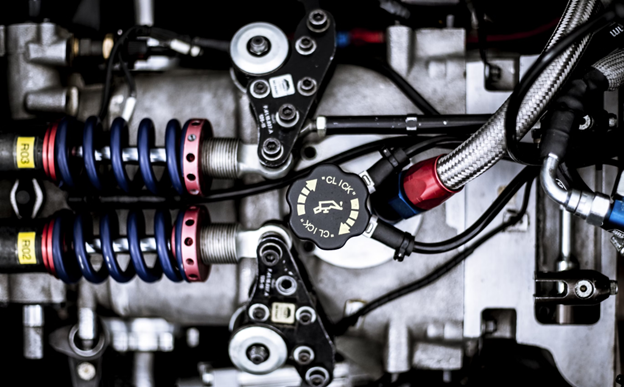Buying the wrong replacement part can cost you more than just money—it can cost you time, reliability, and peace of mind. Car repair prices have surged approximately 23% in the past year alone, and a whopping 27% over the past three years. That spike comes from supply chain challenges, growing technology in cars, and fewer skilled technicians available. All the more reason you want the right part the first time.
Learn how to nail down your vehicle’s exact specs, weigh OEM vs aftermarket vs used options, and verify part fit — all without wasting time or overpaying. We’ll keep it straightforward, conversational, and packed with real-world advice. Let’s dive in.
Table of Contents
ToggleKnow Your Vehicle Inside Out
Getting the right part starts with knowing exactly what you’re driving. Not just the make and model—those are the basics. You’ll also need the year, trim level, engine size, drivetrain, and sometimes even the production month. A 2021 Honda Civic LX 1.5L and a 2021 Civic EX 2.0L may look the same, but their components can differ completely.
The most accurate way to pinpoint your car’s identity is through the Vehicle Identification Number (VIN). It’s a 17-character code you’ll find on your registration, insurance card, or stamped near the windshield. This number reveals every detail about your car, including factory options. Several online tools let you decode the VIN in seconds.
If you’re looking for a streamlined experience, sites like legend car parts allow you to browse components specific to your make and model. Their filtering tools help reduce guesswork and flag incompatible listings, making your search faster and smarter.
OEM vs Aftermarket vs Used Parts
Let’s talk options. You’ve probably seen terms like OEM, aftermarket, and used thrown around — but what do they really mean for you?
OEM stands for Original Equipment Manufacturer. These are parts made by the same company that built your car. They fit perfectly, work as expected, and usually come with a warranty. The downside? They’re often the most expensive.
Aftermarket parts are made by third-party companies. Some are just as good — or even better — than OEM, while others can be hit or miss. The key is knowing which brands have a solid reputation. Read reviews. Ask your mechanic. A good aftermarket part can save you a lot without sacrificing performance.
Then there are used parts. These come from salvage yards or recycled vehicles. If you’re working on an older car or tackling a cosmetic fix, they can be a great deal. Just make sure they’re in good shape and sourced from a trusted seller.
What you choose depends on your budget, how long you plan to keep the car, and how critical the part is. Brakes? Go OEM or high-end aftermarket. A plastic trim piece? Used might do just fine.

Sources to Find the Right Part
You’ve figured out what you need — now where do you find it? Not all sources are created equal, and picking the right one can make or break your repair.
Start with the dealership or your car’s official parts catalog. These sites usually let you search by VIN, which means fewer mistakes. They’re ideal for OEM parts and detailed diagrams that show how everything fits together. But they can be pricey, and shipping might take a while.
Online auto retailers are next. Think of sites that let you filter by year, make, model, and even engine type. They often stock both OEM and aftermarket options, and the best ones clearly label fitment details. If it says “Fits your 2018 Toyota Camry XSE 2.5L” — you’re probably safe.
If you’re looking for a more comprehensive automotive repair solution, some platforms bundle parts lookup with repair guides, tools, and even community support. These all-in-one resources can save you time and prevent costly mistakes, especially if you’re doing the work yourself.
Local junkyards or salvage yards can also be goldmines. Many have searchable inventory systems and even offer parts warranties. For older models or rare pieces, this can be your best bet. Don’t forget to check out online forums or Facebook groups where owners swap parts and advice.
Whichever route you choose, double-check compatibility. Always. What looks right in a picture might not work once it’s in your hands.
Steps to Ensure You Pick the Right One
Picking the right part isn’t just about guessing based on looks — it’s about verifying every detail. Here’s how to do it the smart way:
1. Identify the Exact Part Number
Start by getting the specific part number:
- Check your old part (it may be stamped or labeled).
- Look it up in the vehicle’s service manual or OEM catalog.
- Ask a dealership or use online VIN-based lookup tools. This number ensures precision. Skip it, and you’re rolling the dice.
2. Confirm Compatibility
Don’t rely solely on year and model. You also need:
- Engine type
- Trim level
- Transmission
- Drivetrain
Even within the same model year, differences can throw everything off. Use your VIN whenever possible to filter out mismatches.
3. Vet the Seller
Before you buy, take a few extra minutes to research:
- Do they have solid reviews?
- Is the return policy reasonable?
- Are they known for selling authentic parts?
A lower price means nothing if you’re stuck with junk.
4. Compare Warranties and Watch for Fakes
Some parts include a manufacturer’s warranty — that’s a good sign.
If the price seems too good to be true, it probably is. Counterfeit parts can fail early or even damage your car. Stick to trusted sellers, even if it costs a bit more. It’s worth it in the long run.
Tips for DIY Installation
Once you’ve got the right part in hand, the next big question is — should you install it yourself? For many car owners, the answer is yes, as long as the job is safe and the tools are available. Here’s how to keep things smooth and stress-free.
Prep Your Workspace
Before you touch a single bolt:
Park on a flat surface and ensure good lighting.
Lay out your tools and new part ahead of time.
Keep your workspace clean so you don’t lose fasteners or misplace tools.
Take photos as you go. Label removed parts if needed. It’s easy to forget where something goes when reassembly starts.
Follow a Guide
Use a repair manual or watch a trusted video tutorial. Some parts require specific torque specs or sequences. Skipping these details could lead to a poor fit — or even damage.
Know When to Call a Pro
Some jobs look easy until you’re deep in them. If the part involves brakes, airbags, or suspension — or if you’re not 100% confident — stop. There’s no shame in letting a mechanic finish the job right. Safety should always come first.
Make Every Replacement Count
Getting the right replacement part isn’t hard — if you know where to start. Take the time to gather your vehicle’s exact specs, understand your part options, and verify compatibility before buying. It might feel like a hassle upfront, but it saves time, money, and frustration later on.
Whether you’re replacing a simple filter or tackling a full repair, the right part makes all the difference. So slow down, double-check, and buy smart. Your car will run better — and you’ll feel more confident every time you drive.




 and Canada
and Canada 




